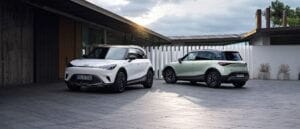Latest Model
Electric motors were first dropped into the latest Fortwo last year. Like the naturally-aspirated versions of the Fortwo, the Electric Drive shares the same electrical underpinnings as the Forfour. This means it produces 81bhp and 115Nm of torque.
It also comes with the same green paint that covers half of the car – like on the Forfour - but if you want another colour you can pay to have it done differently.
Value for money
Prices for the Smart Fortwo Electric Drive start from £20,920, which might seem expensive but you do need to remember that because it produces zero emissions, it qualifies for the government's £4,500 electric car grant, dropping the price down to £16,420. This makes it far more reasonable, although unfortunately it is still considerably pricier than the petrol version of the Fortwo is.
As standard you get equipment such as LED daytime running lights, leather seats, a seven-inch touchscreen and satellite navigation, as well as 15-inch alloy wheels and a leather gearstick and steering wheel.
Smarts have a general reputation of holding their value. They aren't hugely common and because they are desirable on the used market, it keeps values up. For the last-generation model, you can pick up a 2014 example for around £8,750.
If you are looking at the latest model, you are probably better off just buying a new Fortwo ED because of the hefty £4,500 government discount available on them. There are minor savings to be made – for example we saw a 2017 example for sale with 5,000 miles for £15,800. But in the grand scheme of things, these are minor savings to be made over a new model.
Looks and image
The Fortwo still retains the quirky looks that the original had, albeit now with a more modern and sophisticated approach.
To drive around the city it is fantastic. It’s nimble, easy to park and has a fantastic turning circle. While it might have a disappointing 0-60mph figure of 11.5 seconds, it actually feels much quicker thanks to the instant torque generated from the electric motor. It’s pretty brisk up to 40mph, though, which is what most people will be accelerating to in the city.
Out of town, though, it all begins to fall part a bit. The wind and road noise is hugely intrusive, although this might be due to the lack of noise from an engine. That said, other electric cars we’ve driven haven’t shared this problem. The interior quality is largely to a very good standard and gives it an upmarket image, which is good considering its upmarket price. There are a few scatchy plastics, but they are largely hidden.
Its small wheelbase doesn’t help to absorb bumps well, which does lead to quite a rough ride as it goes over them. As an urban runaround though, it’s forgivable.





